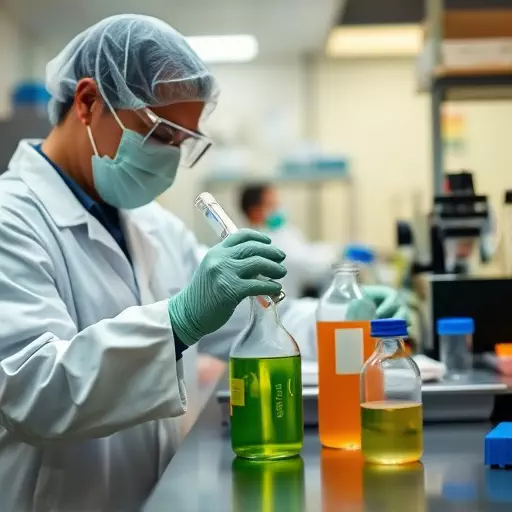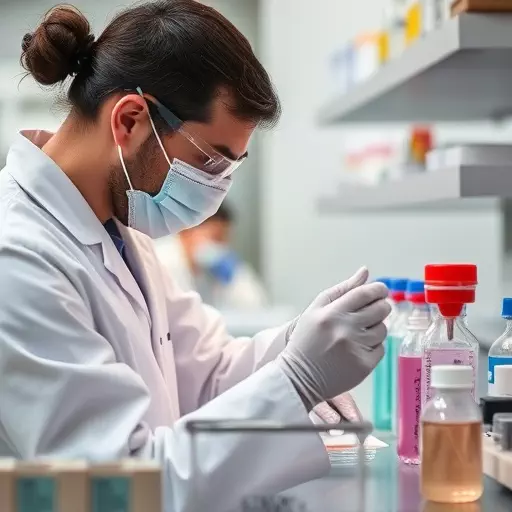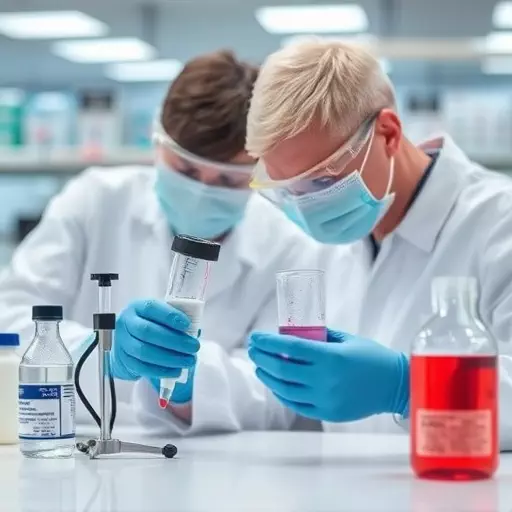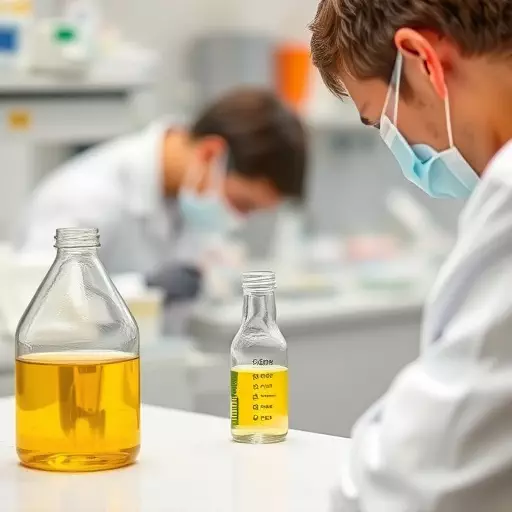In Columbus' vibrant scientific community, effective lab work hinges on robust internal and external controls, especially crucial for temperature management. This ensures accuracy, consistency, and reliability across diverse fields like medicine, biotechnology, and environmental science. Key steps include protocol design, precise temperature control, specimen handling, data recording, equipment calibration, and environment controls to revolutionize experimental approaches and interpret results credibly. Case studies highlight the profound impact of meticulous controls on experimental outcomes, emphasizing the necessity for consistent, credible lab work in Columbus.
In the meticulous world of lab work in Columbus, ensuring accurate and reliable results hinges on a robust system of internal and external controls. This article delves into the foundational role of internal controls in Columbus lab settings, where precise procedures are paramount. We explore how external controls elevate reliability and consistency, offering a structured approach through core steps in laboratory testing processes. Furthermore, we emphasize the critical importance of temperature control in Columbus lab environments and provide best practices for maintaining optimal control measures.
- Understanding Internal Controls: The Foundation of Accurate Testing in Columbus Lab Work
- Unveiling External Controls: Enhancing Reliability and Consistency in Laboratory Procedures
- Core Steps in Laboratory Testing Processes: A Structured Approach
- Temperature Control: A Crucial Aspect for Reliable Results in Columbus Lab Environments
- Integrating Internal and External Controls: Strengthening the Testing Framework
- Case Studies: Real-world Examples of Successful Control Implementation in Columbus Labs
- Best Practices for Maintaining Optimal Control Measures in Laboratory Settings
Understanding Internal Controls: The Foundation of Accurate Testing in Columbus Lab Work

In the intricate world of lab work in Columbus, understanding and implementing internal controls is paramount for ensuring the accuracy and reliability of testing processes. These controls serve as the foundation, laying out core steps that guide each stage of laboratory testing. From sample preparation to data analysis, every action must adhere to strict protocols designed to minimize errors and maximize precision. By integrating these measures into the routine workflow, labs in Columbus can maintain high standards, ensuring their results are not only correct but also consistent and reproducible.
Amongst various internal control mechanisms, temperature control stands out as a critical component in lab environments. Many experiments and analyses rely on precise thermal conditions to yield accurate results. Inaccurate temperature control can lead to drastic changes in chemical reactions, enzyme activity, and even the stability of experimental samples. Therefore, maintaining optimal temperatures throughout the lab work process is not just an option but an essential requirement for effective and reliable laboratory testing in Columbus.
Unveiling External Controls: Enhancing Reliability and Consistency in Laboratory Procedures

In the realm of lab work in Columbus, external controls play a pivotal role in enhancing the reliability and consistency of laboratory procedures. These controls are the core steps in laboratory testing processes that ensure accuracy and repeatability. By meticulously managing variables such as temperature, humidity, and environmental conditions, researchers can maintain a controlled environment, which is crucial for reliable experimental outcomes. The importance of temperature control in lab environments cannot be overstated; it influences chemical reactions, biological processes, and equipment performance, ultimately affecting the validity of results.
External controls act as a cornerstone, fostering integrity within the laboratory setting. They enable scientists to validate their methods, ensure data accuracy, and minimize errors. Through these controls, researchers can confidently replicate experiments, facilitating consistent findings across different trials. This is particularly vital in Columbus’s scientific community, where advanced lab technologies demand precise control to unlock their full potential, driving innovation in various fields.
Core Steps in Laboratory Testing Processes: A Structured Approach

In the heart of lab work in Columbus, understanding and executing core steps in laboratory testing processes is paramount to achieving accurate and reliable results. A structured approach ensures that each stage of the experiment is methodical and consistent. The first crucial step involves designing robust protocols tailored to specific research objectives. This includes defining the variables, establishing control measures, and setting up experimental conditions. Temperature control, for instance, holds immense importance in lab environments, as it can significantly impact chemical reactions and biological processes. Maintaining precise temperature levels ensures the validity of results and prevents unpredictable outcomes.
After protocol design, the next essential phase is preparation. This entails gathering required reagents, calibrating equipment, and setting up the laboratory workspace. Proper setup includes arranging instruments within easy reach and organizing solutions to minimize cross-contamination. Moreover, ensuring consistent environmental conditions—such as temperature, humidity, and lighting—is vital throughout the testing process. Columbus lab work thrives on these foundational steps, which create a reliable framework for data collection and analysis.
Temperature Control: A Crucial Aspect for Reliable Results in Columbus Lab Environments

In the realm of lab work in Columbus, accurate and consistent temperature control is one of the core steps in laboratory testing processes, ensuring reliable results. This aspect becomes increasingly vital as many chemical reactions and biological processes are highly sensitive to temperature variations. Columbus labs must maintain precise conditions to accurately observe and record experimental outcomes, especially when dealing with heat-sensitive compounds or enzymes.
The importance of temperature control in lab environments cannot be overstated. It plays a pivotal role in maintaining the integrity of experiments by preventing unwanted changes that could skew data. For instance, in Columbus’ scientific community, where diverse fields like medicine, biotechnology, and environmental science converge, stable temperatures are essential for comparing research findings and ensuring reproducibility. This control enables researchers to isolate variables, making it easier to pinpoint causal relationships between factors under study, thereby revolutionizing the way experiments are conducted and results interpreted.
Integrating Internal and External Controls: Strengthening the Testing Framework

In the intricate landscape of laboratory testing, particularly in settings like lab work in Columbus, integrating internal and external controls is a game-changer. It involves seamlessly incorporating self-checking mechanisms within the testing process alongside external validation methods to ensure accuracy and reliability. This dual approach strengthens the overall testing framework by addressing potential weaknesses at various stages. For instance, core steps in laboratory testing processes, such as specimen handling, data recording, and result interpretation, can be enhanced through internal controls like duplicate samples, automated quality checks, and standardized protocols.
The significance of temperature control in lab environments cannot be overstated. It’s a critical external control that impacts the integrity of experimental outcomes, especially in fields requiring precise conditions, such as pharmaceutical research or clinical diagnostics. Maintaining optimal temperatures during lab work in Columbus ensures the stability and efficacy of reagents, enhances the reliability of instruments, and preserves the viability of samples, ultimately contributing to more robust and dependable testing results.
Case Studies: Real-world Examples of Successful Control Implementation in Columbus Labs

In the realm of lab work in Columbus, successful implementation of internal and external controls is a cornerstone of accurate and reliable testing. Case studies from various Columbus labs highlight the profound impact of meticulous control processes on experimental outcomes. For instance, a pharmaceutical company in Columbus meticulously monitored temperature control during drug formulation, significantly reducing variability and improving product quality. This example underscores the importance of temperature control in lab environments, as even subtle fluctuations can alter chemical reactions and biological samples.
Additionally, these case studies reveal the core steps in laboratory testing processes that rely on robust controls. From pre-testing preparations to post-analysis validation, each stage involves specific checks and balances. For instance, one Columbus-based biotech firm implemented rigorous standards for equipment calibration, reagent quality control, and duplicate testing, leading to increased accuracy and reproducibility of results. These real-world examples vividly demonstrate that successful control implementation is not merely an option but a requirement for achieving consistent and credible lab work in Columbus.
Best Practices for Maintaining Optimal Control Measures in Laboratory Settings

Maintaining optimal control measures is paramount for accurate and reliable lab work in Columbus and beyond. The core steps in laboratory testing processes involve meticulous planning and implementation to ensure environmental factors, like temperature, are consistently monitored and regulated. The importance of temperature control in lab environments cannot be overstated; it’s a critical component that affects the precision and validity of experimental outcomes.
Best practices for maintaining these controls include using calibrated thermometers and temperature-controlled incubators, regularly calibrating equipment to ensure accuracy, and establishing standard operating procedures (SOPs) for temperature monitoring at each stage of lab work. Additionally, implementing environmental controls like humidity and ventilation helps maintain a consistent laboratory environment, minimizing variability that could skew results.
